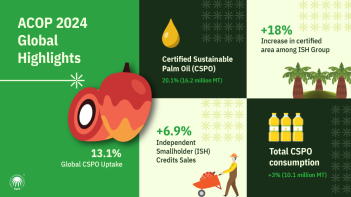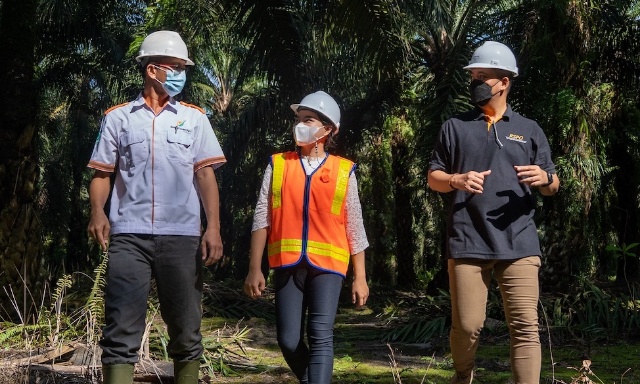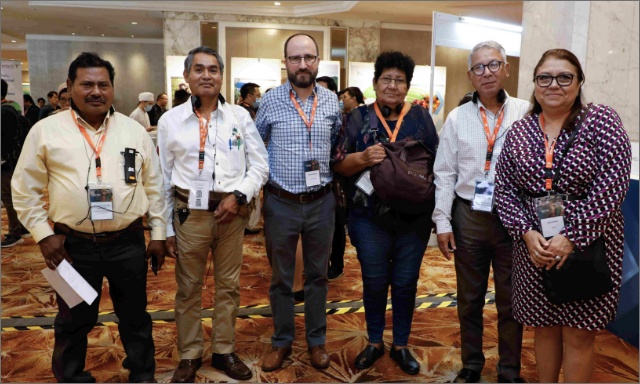Peatlands in their natural state are wet organic soils formed over thousands of years from plant remains, and fall under the classification of organic soils. Globally, a few definitions are applied, which differ according to the percentage of organic matter and minimum thickness of the organic layers.
Since the 1980s, oil palm has successfully been grown on peatlands in Southeast Asia. As of 2015, industrial plantations covered 4.3 million hectares (27 per cent) of peatlands in Peninsular Malaysia, Sumatra, and Borneo. The great majority of these are oil palm plantations (73 per cent), while practically all of the rest (26 per cent) are pulpwood plantations[1]. Collectively, Indonesia and Malaysia have more than 24 million hectares of peatland. The area of peatland within palm oil concessions, however, is much larger, and many are unplanted but degraded.
Oil palm cultivation has negative effects on peatlands
Cultivation of oil palm on peat comes with certain challenges, like high CO2 emissions, peat soil subsidence, consequent flooding, and productivity loss. The drainage required for palm oil cultivation causes peat oxidation, and makes the soil susceptible to fires and floods. Over 5 per cent of global CO2 emissions are caused by peatland degradation resulting from drainage. Plantation hydrology is connected with the surrounding areas, which is why the impact of drainage can be felt up to 5 kilometres from a plantation boundary, and can trigger fires outside of the plantation. Drained peatlands are hotspots for fires, and can lead to haze disasters and alarming greenhouse gas (GhG) emissions.
Peat fires are caused by humans, and can cost human lives
Years ago, a peat fire was thought to be a natural phenomenon, caused by lightning strikes, for example. Researchers now have a clear message: the greatest cause of peat fires are humans. Wet peatland does not burn because the moist conditions will keep the fire from starting. When drained, peat acts as a fuel which can catch fire from a lit cigarette, clear-burning of vegetation, or a lightning strike. Because a peat fire can burn underground, it is very difficult to control.
In the past decades, large-scale peat fires in Southeast Asia have increased in frequency and intensity. In the dry season of 2015, fires in Southeast Asia produced more emissions in a few months than the annual output of Japan or Germany; on some days, fires exceeded the daily emissions of the United States[2]. That year, sky-polluting haze affected the health of millions of people, caused 100,000 premature deaths[3], and triggered an estimated US$16 billion in losses in Indonesia alone[4] .
Peatlands can be saved through rewetting
The good news is that the challenges of fire, haze, subsidence, and flooding from cultivating on peatlands can be prevented and mitigated, and GhG emissions substantially reduced. Intact peatlands should be conserved, and drained peatlands rewetted and restored. Rewetting may involve either rehabilitation back to a natural state, or implementation of alternative forms of utilisation, such as paludiculture, the economic use of rewetted peatlands by cultivation of alternative species that can cope with high water conditions, such as marshland. From paludiculture starch, edible oils or wood can be harvested[5]. Paludiculture prevents peat soil degradation, as it does not require drainage. Rewetted peatlands store water, help adapt to a changing climate, and curb off-site drainage impacts on peat swamp forests. Rewetting of peatlands also helps to conserve and rehabilitate valuable habitats for many animal species.
– Wetlands International
[1] Miettinen et al (2016). Land cover distribution in the peatlands of Peninsular Malaysia, Sumatra and Borneo in 2015 with changes since 1990. Global Ecology and Conservation 6 (2016) 67-78.
[2] http://www.globalfiredata.org/updates.html#2015_indonesia
[3] Koplitz (2016) Public health impacts of the severe haze in Equatorial Asia in September–October 2015: demonstration of a new framework for informing fire management strategies to reduce downwind smoke exposure
[4] World Bank (2016) The Cost of Fire, An Economic Analysis of Indonesia’s 2015 Fire Crisis
[5] http://paludiculture.uni-greifswald.de/doc/paludiculture_broschuere_eng.pdf
Keep reading
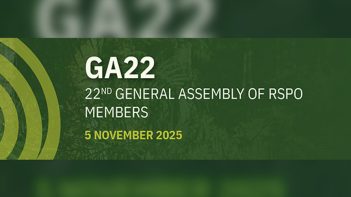
NOTICE FOR THE 22ND GENERAL ASSEMBLY

RSPO Board of Governors Endorses Proposal to Form Executive Committee for Operational Oversight
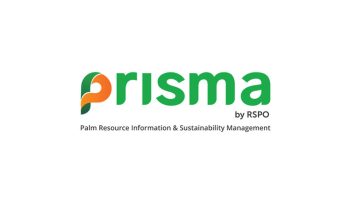
Book Your Slot for the Additional prisma Clinic Session at RT2025
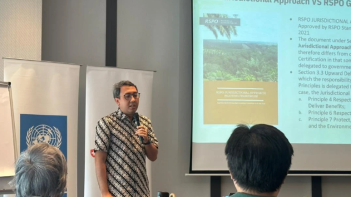
Advancing Jurisdictional Certification in Sabah: Strengthening Collaboration Between RSPO, UNDP, and Jurisdictional Approach System for Palm Oil (JASPO)
Call for Expression of Interest: Independent Investigation of a Complaint

Leading Labels: RSPO Among Top Sustainability Labels in Dutch Market

The 21st International Oil Palm Conference Successfully Took Place in Cartagena, Colombia
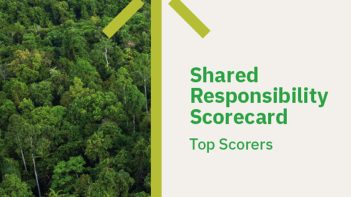
Top Performers of the 2025 Shared Responsibility Scorecard
